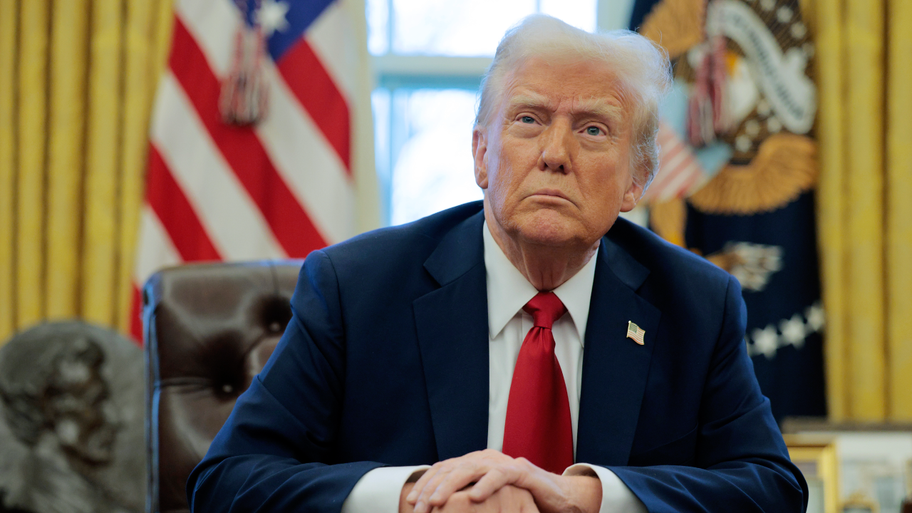The Ripple Effect: Analyzing the Impact of Tariffs on Everyday Consumers
Tariffs are more than just numbers on a trade ledger; they ripple through our economy, affecting daily life in subtle and overt ways. As the U.S. navigates complex global relationships, these tariffs have become a hot topic of conversation. With President Trump’s aggressive tariff policies, consumers might wonder: how will this affect my wallet? From grocery prices to tech gadgets, the implications are widespread and significant. Let's dive into the intricate web of tariffs and explore their impact on everyday Americans—because understanding this phenomenon is crucial for making informed choices in today’s marketplace.
The Ripple Effect: Analyzing the Impact of Tariffs on Everyday Consumers
Tariffs can create a domino effect that reaches consumers long after they are implemented. When the government imposes tariffs on imported goods, manufacturers often pass those costs onto consumers. This means higher prices for everything from clothing to electronics, leaving shoppers feeling the pinch at checkout.
Moreover, tariffs can disrupt supply chains, causing delays and shortages in products we rely on daily. As companies scramble to adapt, consumer choices may become limited while prices continue to rise. Understanding these dynamics is essential for anyone looking to navigate today’s economy effectively.
Understanding Tariffs and Their Purpose
Tariffs are taxes imposed by governments on imported goods. Their primary purpose is to protect domestic industries by making foreign products more expensive, encouraging consumers to buy local. By raising the cost of imports, tariffs aim to level the playing field for homegrown businesses.
Governments also use tariffs as a tool in trade negotiations. They can leverage these taxes to gain concessions from other countries or retaliate against unfair practices. Tariffs influence market dynamics and consumer choices, shaping economic landscapes in complex ways that often go unnoticed by the average person.
What are tariffs and how do they work?
Tariffs are taxes imposed by a government on imported goods. They serve as a way to regulate international trade, making foreign products more expensive and less competitive against domestic ones. This can protect local industries from global competition.
When tariffs are enacted, they increase the cost of importing goods for businesses. In turn, these costs often trickle down to consumers through higher prices in stores. Understanding how tariffs function is crucial for grasping their broader economic impact on everyday life and market dynamics.
Why is Trump utilizing tariffs?
Trump has utilized tariffs as a strategy to protect American businesses and jobs. His administration believes that imposing tariffs on foreign goods will encourage consumers to buy domestically produced products, thus bolstering the U.S. economy.
Additionally, Trump aims to address trade imbalances with countries like China. By levying tariffs, he seeks leverage in negotiations. The hope is that these measures will lead to better trade agreements that benefit American interests while reducing reliance on imports.
Exploring Trump's 'reciprocal tariffs'
Trump's approach to tariffs included the concept of reciprocal tariffs. This strategy aimed to level the playing field by imposing similar duties on countries that enforced high taxes on U.S. exports. The idea was simple: if another country charged hefty tariffs, the U.S. would respond in kind.
This tactic sparked debates about its effectiveness and potential fallout. While some believed it would protect American industries, others feared it could escalate trade wars and hurt consumers through rising prices. The implications of these policies are still unfolding as nations react accordingly in a complex global market.
Impact on US Consumers
The implementation of tariffs often leads to higher prices for everyday goods. As businesses face increased costs on imported materials, they typically pass these expenses onto consumers. This can result in noticeable price hikes at grocery stores and retail outlets.
Additionally, certain industries may struggle due to reduced competition from abroad. With fewer choices available, consumers might find themselves paying more for lower-quality products. The ripple effect is undeniable: tariffs create a chain reaction that ultimately impacts the wallets of American families across the nation.
Will prices increase for US consumers?
As tariffs take effect, many US consumers are bracing for higher prices. When import costs rise due to tariffs, businesses often pass that expense onto shoppers. Everyday items like clothing and electronics could see noticeable price hikes.
Furthermore, industries heavily reliant on imported materials may struggle to absorb these added costs. This often leads to a ripple effect across various sectors, impacting everything from food prices to home goods. Consumers could find themselves facing tough choices as their purchasing power diminishes amid rising expenses linked to tariff policies.
Global Implications
Trump's tariffs have stirred significant global reactions. Countries worldwide are assessing their trade strategies in response to the U.S.'s approach. For instance, the UK is feeling the ripple effects as their export markets adjust to new pricing dynamics.
Other nations may retaliate with their own tariffs, creating a tit-for-tat scenario. This could lead to strained relationships and an uncertain trading environment. As countries navigate these challenges, businesses must adapt swiftly or risk losing competitive advantages on the international stage.
Assessing the effects of Trump's tariffs on the UK
Trump’s tariffs have rippled across the Atlantic, affecting trade dynamics between the US and the UK. The imposition of tariffs on goods like steel and aluminum has led to increased costs for British exporters. Many companies are feeling squeezed as they navigate these financial hurdles.
Moreover, retaliatory measures from the UK government have created a complex landscape. Increased prices on American imports could lead to reduced consumer choice in Britain. Businesses must adjust their strategies quickly, balancing cost management with maintaining competitive pricing for consumers back home.
Responses from other countries to Trump's tariffs
Countries around the globe have reacted strongly to Trump's tariffs. Many have imposed their own retaliatory measures, targeting key American exports. This tit-for-tat approach escalates trade tensions and disrupts markets.
For example, China has placed hefty tariffs on U.S. agricultural products like soybeans and pork, impacting farmers across America. The EU and Canada also responded with levies on goods such as whiskey and motorcycles. These actions illustrate how interconnected economies are affected by tariff decisions made in one part of the world.
Case Studies and Economic Insight
The effects of tariffs ripple through various industries, creating both winners and losers. For instance, the steel and aluminum sectors saw a temporary boost as domestic production increased. However, this came at a cost to manufacturers relying on these metals for production, leading to higher operational costs.
In agriculture, farmers faced challenges due to retaliatory tariffs from other countries affecting exports. The dairy industry struggled with reduced sales overseas while consumer prices remained volatile. These case studies highlight how interconnected global economies are and the broader implications of tariff policies on everyday consumers.
Examination of how tariffs have influenced different industries and economies
Tariffs have disrupted various industries, notably steel and aluminum. Increased costs for these raw materials led to higher prices in construction and manufacturing. As a result, builders faced tougher margins while consumers experienced rising home prices.
Agriculture also felt the pinch as tariffs sparked retaliatory measures from other countries. American farmers saw decreased demand for their products abroad, leading to financial strain within rural communities. The ripple effect on job security in these sectors showcased just how intertwined global trade is with domestic economic health.
Analysing the repercussions of tariffs on businesses and the national economy
Tariffs can create significant ripple effects throughout the economy, impacting both businesses and consumers. Companies often face increased costs for imported materials, which they may pass on to customers in the form of higher prices. This can dampen consumer spending and lead to reduced sales.
Moreover, tariffs can strain international relationships and disrupt supply chains. Businesses that rely on global trade might find themselves re-evaluating their strategies. Some may even relocate production to avoid tariffs altogether, leading to job losses domestically while altering economic landscapes worldwide.
Looking Forward
The future of trade relations is uncertain as tariffs continue to shape the landscape. Businesses are bracing for potential volatility, with many reassessing their supply chains and pricing strategies. As countries adapt, the ripple effects may be felt across various sectors.
Moreover, consumers could face rising prices on everyday goods. The economic climate might shift further if retaliatory measures escalate. Looking ahead, companies will need to navigate these challenges while policymakers consider long-term solutions that promote fair trade without stifling growth or innovation in the market.
Potential consequences of Trump’s tariff policies
Trump’s tariff policies may lead to increased costs for everyday consumers. Higher import tariffs can drive up prices on goods, ranging from electronics to clothing. As companies face higher expenses, they often pass those costs onto shoppers. This could strain household budgets and alter spending habits.
Additionally, retaliatory tariffs from other nations pose risks for U.S. exporters. American products could become more expensive abroad, decreasing competitiveness in international markets. Such a shift might result in job losses in sectors reliant on export sales, stirring economic uncertainty across multiple industries.
Predictions for the future of trade relations amidst tariff implementations.
As we look ahead, the landscape of trade relations remains uncertain. Trump's tariff policies have already shifted dynamics, and their long-term effects are yet to unfold. Economists suggest that tariffs could lead to strained relationships with key trading partners.
Potential retaliation from other nations may escalate tensions further, complicating future negotiations. Additionally, businesses might adapt by seeking alternative suppliers or altering pricing structures to mitigate impacts on consumers.
The balance between protecting domestic industries and fostering healthy international trade will be crucial moving forward. Stakeholders must navigate this intricate web carefully as they work towards stability in a rapidly changing economic environment. The real question lies in how effectively all parties can collaborate amidst these challenges while minimizing disruptions for everyday consumers.












 English (CA) ·
English (CA) ·  English (US) ·
English (US) ·  Spanish (MX) ·
Spanish (MX) ·